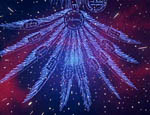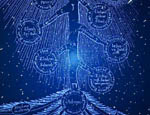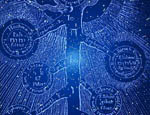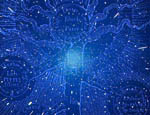FGC:OP Cut 002b: Difference between revisions
No edit summary |
No edit summary |
||
| (7 intermediate revisions by 4 users not shown) | |||
| Line 2: | Line 2: | ||
{{FGC:Scene | {{FGC:Scene | ||
|cuts= | |cuts= | ||
</noinclude>{{FGC:Cut|episode= | </noinclude>{{FGC:Cut|episode=OP | ||
|cutname= | |cutname=002b | ||
|images= | |images= | ||
[[Image:OP_C002b_a.jpg]] | |||
|cutnumbertext= | [[Image:OP_C002b_b.jpg]] | ||
[[Image:OP_C002b_c.jpg]] | |||
[[Image:OP_C002b_d.jpg]] | |||
|cutnumbertext=[[FGC:OP Cut 002b|002b]] | |||
|script= | |script= | ||
{{FGC:Script Text|type=music | {{FGC:Script Text|type=music | ||
|text=}} | |text=Shounen yo shinwa ni nare | ||
(Young boy, become a legend)}} | |||
{{FGC:Script Text|type=description | {{FGC:Script Text|type=description | ||
|text=}} | |text=A graphical figure appears and vanishes on a blue screen.}} | ||
|comments= | |||
{{FGC: | {{FGC:Comment|name=Reichu | ||
| | |comment=And … enter the Kabbalistic propaganda! This is a variation upon the Sephirotic Tree of Life, [[:File:Fludd tree-of-life.gif|"the inverted tree"]], from a work by Robert Fludd (1574-1637) called ''Utriusque Cosmi Maioris scilicet et Minoris Metaphysica Physica Atque Technica Historia'' — or ''Utriusque Cosmi Historia'', for short. Fludd was an alchemical philosopher whose work was met with great controversy when it was first published. ''UCH'', his second and largest work, was originally published in 1617, but apparently this rendition first appeared in the 1621 edition. Getting into the nature of Fludd's work is far beyond the scope of this commentary, but there is plenty of information available about him for those interested. [http://web.archive.org/web/20021215055212/http://www.nd.edu/~dharley/witchcraft/Fludd.html Source]}} | ||
{{FGC: | {{FGC:Comment|name=tv33 | ||
| | |comment=The Tree of Life. Something about how it's a tree from The Garden of Eden, whose fruit would give those who eat it immortality. Also that it come from the Kabbalah, an aspect of Jewish mysticism. Its paths represent aspects of God and divinity. All that jive…}} | ||
{{FGC: | {{FGC:Comment|name=Shin-seiki | ||
| | |comment=I read somewhere that the Tree of Life is not just a part of the Judaic mystical tradition, but occurs in other religions as well, such as Hinduism, for example. The TOL is, for some reason, depicted as an inverted tree, with the roots on top, and the crown and branches below. The tree-like character of this image becomes more apparent if one composites it and flips it vertically.}} | ||
{{FGC: | [{{FGC:Comment|name=Reichu | ||
| | |comment=We could really, really use an elaborated and referenced replacement for tv33's comment. References for Shin-seiki's comment would be welcome, as well. I'll do it sometime}} ] | ||
| | {{FGC:Comment|name=Reichu | ||
|comment=Before we are inundated with any more religious symbols… I should point out that one of the greatest misconceptions people have about NGE is that the religious content has any actual meaning, at least as far as a religious agenda on the part of the creators goes.}} | |||
{{FGC:Comment|name=MDWigs | |||
|comment=I '''''really''''' dislike this misconception. When [http://web.archive.org/web/20020110094207/www.akadot.com/article/article-tsurumaki2.html asked at Otakon 2001] to explain the symbolism of the cross in NGE, Tsurumaki (assistant director of NGE and director of the ''Air'' part of EoE) replied: | |||
{{FGC:External|text=There are a lot of giant robot shows in Japan, and we did want our story to have a religious theme to help distinguish us. Because Christianity is an uncommon religion in Japan we thought it would be mysterious. None of the staff who worked on Eva are Christians. There is no actual Christian meaning to the show; we just thought the visual symbols of Christianity look cool. If we had known the show would get distributed in the US and Europe we might have rethought that choice.}} | |||
Also, the following was posted by [http://eva.onegeek.org/pipermail/evangelion/2004-May/001289.html bochan_bird on the Eva ML]: | |||
{{FGC:External|text=According to a very frank and open 40-minute interview by Anno on the NHK TV program Top Runner (www.nhk.org.jp/tr/) about a week or so ago, all religious and philosophical references, while providing a coherent setting for the story, were used for the specific purpose of looking cool and to make Anno & company appear intelligent.}} | |||
Anno himself called it “pedantry” (the display/parading of one's intelligence), and this is backed up by comments by Tsurumaki and other staff as well. So get over the religious inferences, because THERE IS NO DEEPER MEANING!!!}} | |||
{{FGC:Comment|name= | {{FGC:Comment|name=Hexon.Arq | ||
|comment=}} | |comment=I'll be perfectly honest and say that I am one of those people who believe that the lack of substance in the religious symbolism is part truth, part blatant falsehood. Things like cross-explosions and esoteric names may fit the description of frivolous window dressing, but other occurrences simply make too much sense to be dumb luck.}} | ||
{{FGC:Comment|name= | {{FGC:Comment|name=MDWigs | ||
|comment=}} | |comment=Pedantry aside, I think that the religious symbolism used in NGE should be viewed within the context of the show itself and how it oftentimes reinforces some of the themes and ideas being presented. Some of the references are empty and just there to “look cool”, but others do, like Hexon.Arq says, have more "substance" to them — just not in an actual ''religious'' context.}} | ||
}} | }} | ||
<noinclude>}} | <noinclude>}} | ||
[[Category: FGC Cuts]] | [[Category:FGC Cuts]] | ||
[[Category: FGC | [[Category:FGC OP Cuts]] | ||
</noinclude> | </noinclude> | ||
Latest revision as of 04:25, 28 December 2009
| Screenshots | Cut # | Description/Dialogue | Commentary | ||
|---|---|---|---|---|---|
| 002b |
|
|




